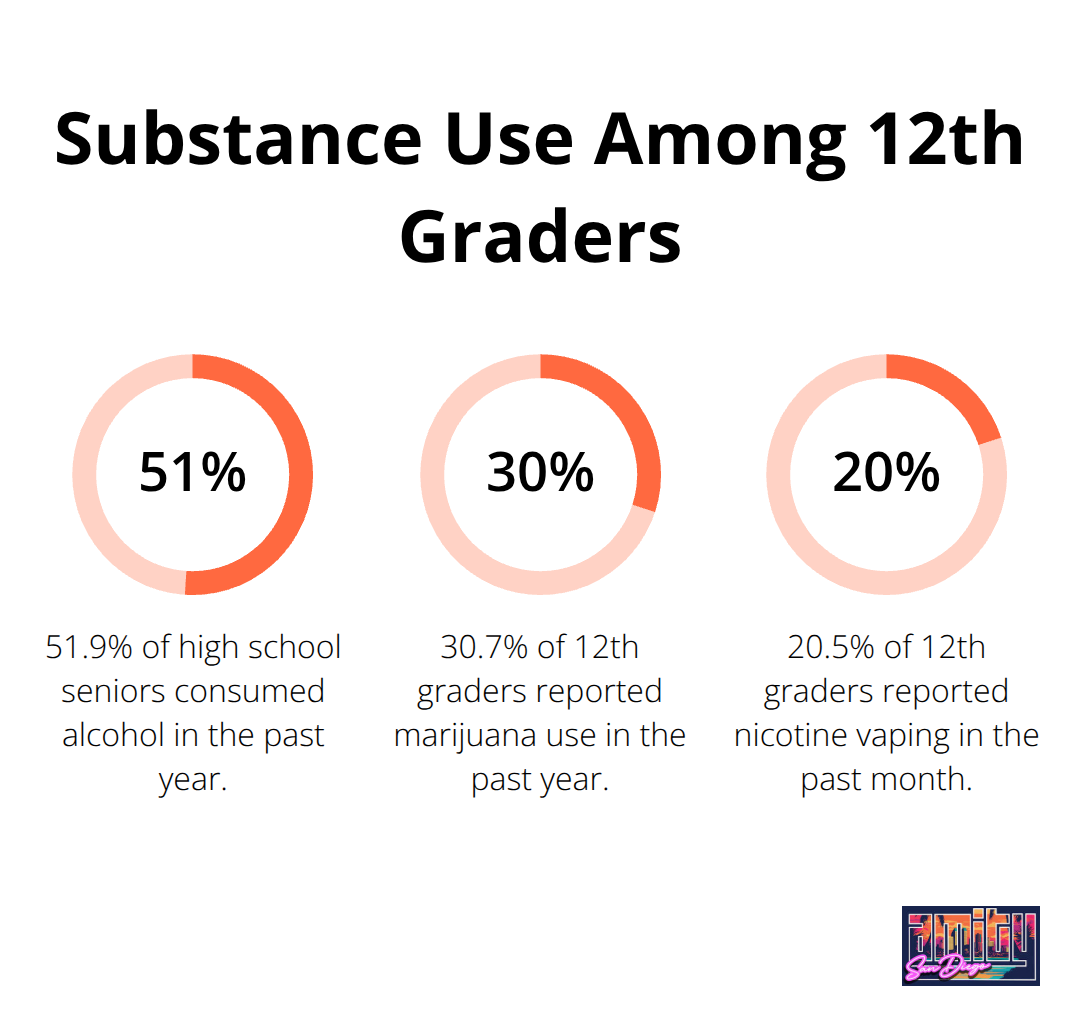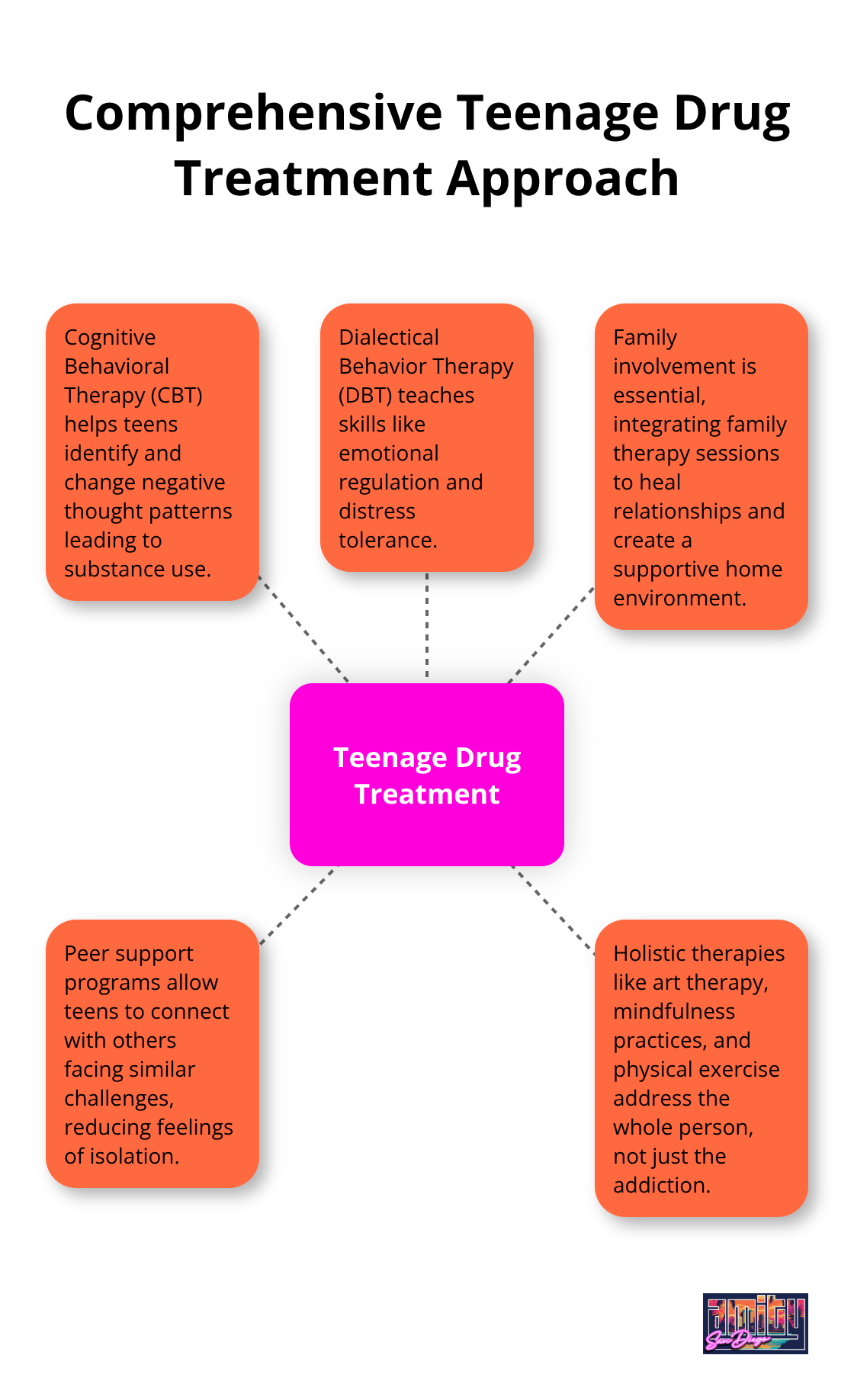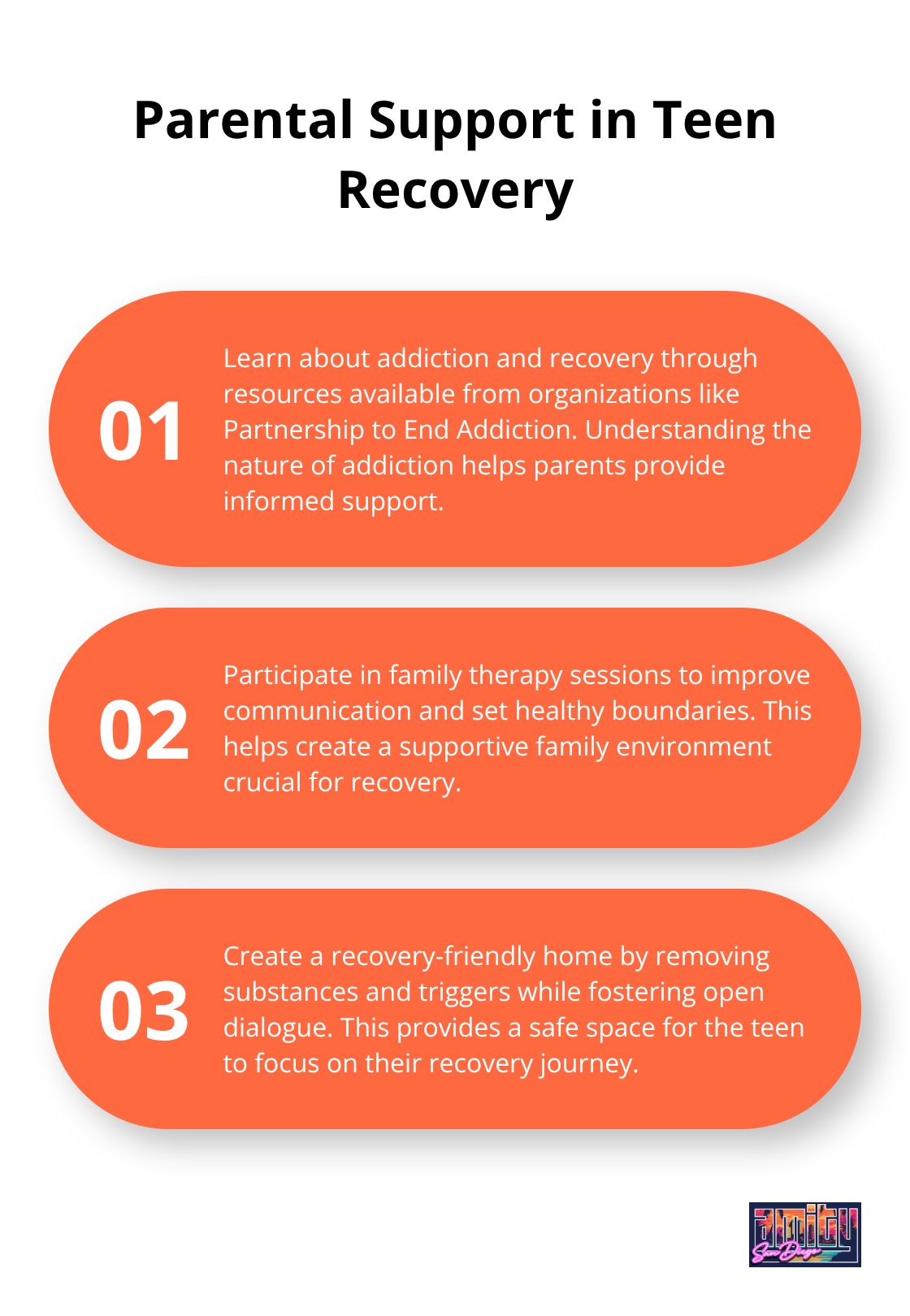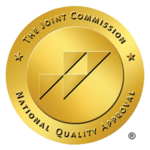At Amity San Diego, we understand the critical importance of addressing teenage drug addiction head-on.
Teenage drug treatment programs play a vital role in supporting young individuals on their journey to recovery. These programs offer specialized care tailored to the unique needs of adolescents struggling with substance abuse.
In this blog post, we’ll explore effective approaches to teenage drug treatment, the impact of addiction on adolescent development, and strategies for building a strong support system for long-term recovery.
What Drives Teenage Drug Use?
Common Substances Abused by Teenagers
The landscape of teenage drug use constantly evolves. According to the National Institute on Drug Abuse, marijuana tops the list of illicit substances used by adolescents. In 2022, 30.7% of 12th graders reported marijuana use in the past year. Alcohol remains prevalent, with 51.9% of high school seniors consuming alcohol in the past year.
Vaping has exploded in popularity (20.5% of 12th graders reported nicotine vaping in the past month). Prescription drug misuse, particularly opioids and stimulants, continues to raise alarm. The easy access to these substances (often from home medicine cabinets) makes them especially dangerous.

Risk Factors for Teenage Substance Abuse
Several factors increase the likelihood of teenage drug use:
- Peer pressure and social norms
- Family history of substance abuse
- Mental health issues (depression or anxiety)
- Trauma or adverse childhood experiences
- Academic stress and pressure to perform
- Lack of parental supervision or involvement
The presence of risk factors doesn’t guarantee drug use. However, understanding these factors helps parents, educators, and healthcare providers identify at-risk youth and intervene early.
The Impact on Adolescent Development
Drug use during the teenage years profoundly affects brain development. The adolescent brain continues to mature, particularly in areas responsible for decision-making, impulse control, and judgment. Substance abuse disrupts this critical developmental process.
Research from the University of California, San Diego, links heavy marijuana use in adolescence to disadvantages in neurocognitive performance and brain development. These changes lead to long-term cognitive deficits, affecting memory, attention, and learning abilities.
Moreover, early drug use increases the risk of developing substance use disorders later in life. There is substantial evidence that alcohol, tobacco, and cannabis dependence problems surface more quickly when use of these drugs starts before adulthood.
Prevention and Early Intervention Strategies
To combat teenage drug use, we must focus on prevention and early intervention:
- Education: Implement comprehensive drug education programs in schools and communities.
- Parental involvement: Encourage open communication between parents and teens about substance use.
- Mental health support: Provide accessible mental health resources for adolescents.
- Positive activities: Promote engagement in sports, arts, and community service.
- Peer support programs: Develop peer-led initiatives to create positive social norms.
These strategies aim to reduce risk factors and strengthen protective factors against substance abuse.
As we move forward, it’s essential to understand that effective treatment for teenage drug addiction requires a multifaceted approach. Let’s explore the various treatment modalities and their impact on adolescent recovery.
How We Effectively Treat Teenage Drug Addiction
At Amity San Diego, we witness the transformative power of evidence-based treatment for teenage drug addiction. Our approach combines cutting-edge therapies with compassionate care to address the unique needs of adolescents struggling with substance use disorders.
Tailored Therapies for Teens
Cognitive Behavioral Therapy (CBT) stands out as a cornerstone of effective treatment for teenage drug addiction. This approach helps teens identify and change negative thought patterns that lead to substance use. Research shows that out-patient CBT treatment can be effective in reducing adolescent substance use and related problems.
Dialectical Behavior Therapy (DBT) is another powerful tool in our arsenal. DBT teaches teens skills like emotional regulation and distress tolerance. Research from the University of Washington shows that DBT can reduce substance use and improve overall mental health in adolescents with co-occurring disorders.
The Critical Role of Family
Family involvement is essential in successful teenage drug treatment. We integrate family therapy sessions into our treatment plans, helping to heal relationships and create a supportive home environment.
Peer Support: A Game-Changer
Group therapy and peer support programs play a vital role in teenage recovery. These settings allow teens to connect with others facing similar challenges, reducing feelings of isolation. The Substance Abuse and Mental Health Services Administration (SAMHSA) emphasizes the importance of peer support in promoting long-term recovery and preventing relapse.
Comprehensive Care in San Diego
San Diego offers a range of options tailored to teenagers (including our programs at Amity San Diego). We provide a continuum of care that includes Partial Hospitalization Programs (PHP) and Intensive Outpatient Programs (IOP). These flexible treatment options allow teens to receive intensive support while maintaining some normalcy in their daily lives.
Our approach also incorporates holistic therapies like art therapy, mindfulness practices, and physical exercise. These complementary treatments address the whole person, not just the addiction.

Early intervention is key. If you suspect your teen struggles with substance use, take action now. The road to recovery starts with a single step, and professional guidance can make all the difference.
As we explore the importance of a strong support system in teenage recovery, it becomes clear that treatment is just the beginning of a lifelong journey towards health and well-being.
Addiction treatment San Diego options include individual counseling, medications for addiction treatment, mental health services, and outpatient treatment services.
Building a Recovery Support Network for Teens
The Power of Parental Involvement
Parents become essential allies in their teen’s recovery journey. Families are powerful resources for enhancing treatment and recovery success among youth with substance use disorders. We encourage parents to take these steps:
- Learn about addiction and recovery (resources available through organizations like Partnership to End Addiction).
- Participate in family therapy sessions to improve communication and set healthy boundaries.
- Join support groups (e.g., Al-Anon or Nar-Anon) to connect with others facing similar challenges.
- Create a recovery-friendly home by removing substances and triggers while fostering open dialogue.
- Recognize relapse signs for early intervention.

Leveraging School and Community Resources
Schools and communities offer powerful support for teenage recovery:
- Collaborate with school counselors on academic support plans (potentially including reduced course loads or extra tutoring).
- Encourage participation in school-based recovery programs or sober clubs.
- Connect with local organizations (YMCAs, churches, community centers) that promote healthy youth activities.
- Explore mentorship opportunities through programs like Big Brothers Big Sisters.
Equipping Teens with Healthy Coping Skills
We focus on developing essential coping mechanisms for long-term recovery:
- Teach mindfulness and stress-reduction techniques (apps like Headspace or Calm can supplement practice).
- Promote regular physical exercise to boost mood and reduce stress.
- Encourage creative expression through art, music, or writing.
- Support the development of a sober social network (recovery-focused youth groups, sober events).
- Build life skills (financial management, job readiness, healthy relationship skills).
The Role of Professional Treatment
At Amity San Diego, we offer evidence-based outpatient treatment for adults with substance use disorders, fostering recovery and long-term wellness. Our approach includes:
- Evidence-based therapies (CBT, DBT, EMDR)
- Dual diagnosis treatment for co-occurring mental health issues
- Holistic therapies (yoga, art therapy, nutrition counseling)
- Family therapy integration
- Aftercare planning and relapse prevention strategies
We believe in a personalized approach (our low staff-to-client ratio ensures individualized attention).
Creating a Long-Term Recovery Plan
A successful recovery extends beyond initial treatment. We help teens:
- Identify triggers and develop coping strategies
- Set realistic short-term and long-term goals
- Create a relapse prevention plan
- Establish a support network (including sober peers, mentors, and supportive family members)
- Engage in ongoing therapy or support groups as needed
Final Thoughts
Teenage drug treatment programs provide hope for young individuals struggling with substance use disorders. Early intervention can alter the course of a teen’s life, mitigating long-term health risks and preventing academic setbacks. Ongoing support and comprehensive aftercare play a vital role in maintaining lasting sobriety and helping teens reintegrate into their daily lives.
We at Amity San Diego offer evidence-based outpatient programs designed to empower young adults with tools for reclaiming their futures. Our services include intensive outpatient programs, dual diagnosis treatment, and holistic therapies (all tailored to meet individual needs). We focus on strengths rather than deficits, helping young people build confidence and develop effective coping strategies.
Recovery is possible with the right support, treatment, and determination. Teenagers can overcome addiction and build fulfilling, substance-free lives. If you or a loved one struggles with substance use, don’t hesitate to reach out for help. Take the first step towards recovery by contacting us today.



